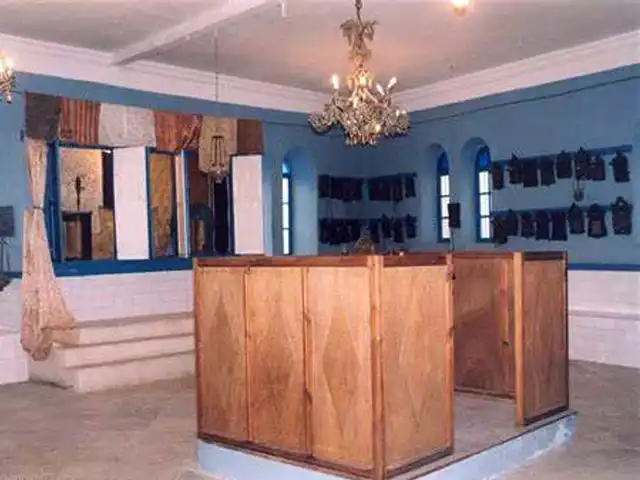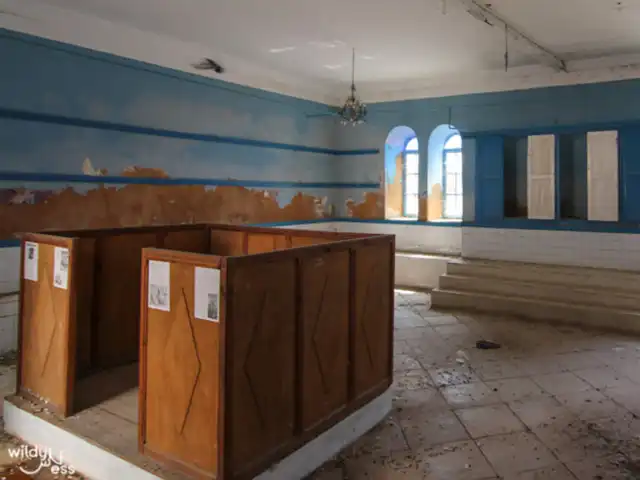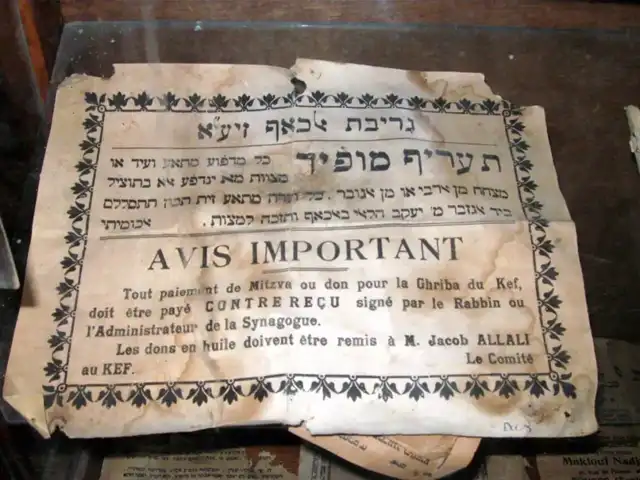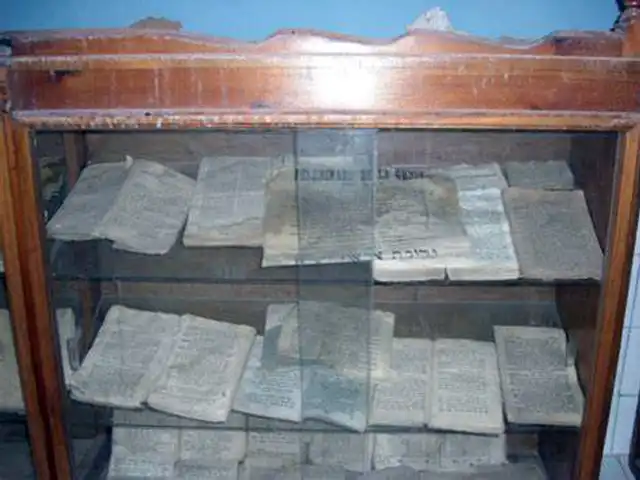The Kef Synagogue
The Kef Synagogue is the place of worship for the Jews of Kef. Like those of other cities, these people were divided between trade and crafts, and they continued under the protectorate to engage in their traditional activities. According to the counts of the inter-war period, their numbers were successively: 784 in 1921, 812 in 1926, 897 in 1931 and 807 in 1936. The relative stability of these numbers leads one to believe that the new generations having received a modern education emigrated to other cities, and among others to Tunis the capital and the island of Djerba.
After the last war, the Jewish population of Le Kef experienced a marked decline. In 1946, there were 11,246 inhabitants, including 9,497 Muslim Tunisians, 1,077 Europeans of various nationalities and 357 Jewish Tunisians. The Jewish population, reduced to a small number of families, devoted itself to the trade of agricultural products from the region (cereals, skins, wool- and imported manufactured products: fabrics, shoes, hardware). The craft professions were represented there by tailors, shoemakers and saddlers, but also by blacksmiths and blacksmiths. On the eve of Tunisian independence, there were still 313 Jewish Tunisians in Kef in 1956. The last Keffois Jew left the city in 1984.
The Kef Synagogue was the object of great veneration, not only by the Jews of the city, but also by all those of the region who went there on pilgrimage each year in the week marked by the feast of Sukkot, or feast of the huts.
Like the famous synagogue of Hara el-Seghira in the island of Djerba, this synagogue was called al-Ghriba which means “isolated, “solitary”, “abandoned”, but also “strange”, “foreign”, “extraordinary” , “wonderful”. We do not know the origin of this name, and we do not know why this place of worship has become the object of particular veneration.
According to the Jews of Le Kef, their synagogue owes its sanctity to the fact that it was raised above the tomb of a woman of exemplary virtue and piety (according to information collected from Mme Suzette Chemama).
For the scholar Nahum Slouschz, the Kef synagogue owes its sanctity to the fact that it was originally located not far from the cemetery where the nomadic Jews of the region came to bury their dead (N. Slouschz, Un voyade d’études… , pp. 20-21).
The legend, meanwhile, tells the story of three orphans who would have separated and would have founded the three Ghriba: Bône (Annaba) in Algeria, Kef and Djerba. There are two other Ghriba in Tunisia: In Ariana, Ghribet Riana and in Tunis, Ghribet El Hafsia called “Lem Mdafa”.
It is customary to practice a “Séouda” or annual pilgrimage there. In Kef, this Séouda took place between the feasts of the Jewish Passover known as “Aïd El Ftira” and Shavuot. It lasted up to three or four days. A calf was brought there and walked around town, adorned with scarves or handkerchiefs and various necklaces. It was then killed and the back of the beast was offered to the notables. We were preparing a giant couscous simmered over a wood fire for the whole community and friends. The faithful made donations of meat and semolina to meet the expenses of the feast and the food was distributed free of charge.
All this died out in the 1980s with the gradual departure of the Keffois Jews. The last Jew from Keffois left the city in 1984, handing over the keys of the synagogue to the ASM (Association for the Safeguarding of the Medina). It will be restored ten years later by the Tunisian authorities and opened to the public on April 13, 1994.
The Kef Synagogue in Pictures





